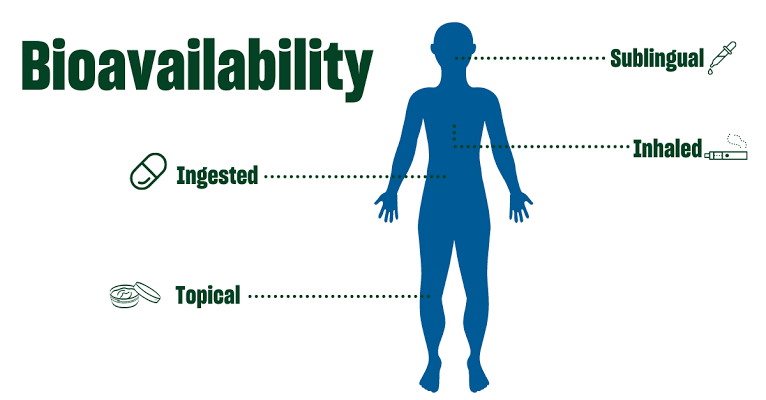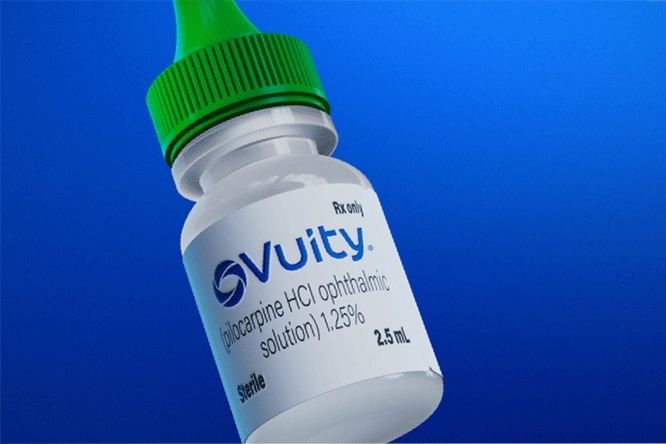
In pharmacology, nutrition, and toxicology, the concept of bioavailability is paramount. It describes the proportion of a substance (such as a drug, nutrient, or chemical) that enters the systemic circulation unchanged after administration and thus becomes available to produce its intended effect. Understanding bioavailability is crucial for designing effective dosage regimens, developing new therapeutic agents, and ensuring the safety and efficacy of various substances.
Defining Bioavailability
Bioavailability (often denoted by the symbol ‘F’) is formally defined as the fraction of an administered dose of unchanged drug that reaches the systemic circulation. When a drug is administered intravenously (IV), its bioavailability is by definition 100% (F=1), as it bypasses the absorption barriers and enters the bloodstream directly. For all other routes of administration, particularly oral, intramuscular, subcutaneous, or transdermal, bioavailability is typically less than 100% due to incomplete absorption, first-pass metabolism, and other elimination processes occurring before the substance reaches the systemic circulation.
There are two primary types of bioavailability:
- Absolute Bioavailability: This compares the bioavailability of a drug via a non-intravenous route (e.g., oral) to that via an intravenous route. It is calculated as the ratio of the area under the plasma concentration-time curve (AUC) for the non-IV route to the AUC for the IV route, adjusted for dose.
- Relative Bioavailability: This compares the bioavailability of a drug from one formulation or route of administration to another, non-intravenous standard formulation or route. It is often used to compare a new formulation of a drug against a well-established reference formulation or to assess bioequivalence between generic and brand-name drugs.
Why Bioavailability Matters
The practical implications of bioavailability are profound:
- Therapeutic Efficacy: A drug’s intended action depends on it reaching its target site in sufficient concentration. Low bioavailability means a significant portion of the dose never reaches the systemic circulation, potentially rendering the treatment ineffective.
- Dose Adjustment: Understanding bioavailability allows clinicians to adjust dosages appropriately for different routes of administration. For instance, an orally administered drug with low bioavailability will require a higher dose than the same drug given intravenously to achieve comparable systemic exposure.
- Drug Development: In the drug discovery and development process, optimizing bioavailability is a key objective. Poor bioavailability can lead to the discontinuation of promising drug candidates.
- Food and Nutrient Absorption: Beyond pharmaceuticals, bioavailability is critical for understanding how effectively the body absorbs essential nutrients (e.g., vitamins, minerals) from food sources or supplements, impacting dietary recommendations and fortification strategies.
- Toxicology: For toxic substances, bioavailability determines the actual systemic exposure and thus the extent of potential harm.
Factors Affecting Bioavailability
Bioavailability is a complex parameter influenced by a multifaceted interplay of the substance’s inherent properties, physiological conditions of the individual, and the characteristics of the dosage form. These factors can be broadly categorized as follows:
1. Drug/Substance Properties (Physicochemical Factors)
The intrinsic properties of the drug molecule itself play a fundamental role in its absorption and subsequent bioavailability.
- Solubility and Dissolution Rate: For a drug to be absorbed from the gastrointestinal (GI) tract, it must first dissolve in the GI fluids.
- Solubility: Highly water-soluble drugs may dissolve quickly but might have difficulty permeating lipid-rich cell membranes. Poorly water-soluble drugs may have limited dissolution, thus limiting the amount available for absorption. The Biopharmaceutics Classification System (BCS) categorizes drugs based on their solubility and permeability, offering insights into their likely bioavailability challenges.
- Dissolution Rate: Even if soluble, the rate at which a solid drug dissolves can be the rate-limiting step for absorption. Factors like particle size, crystal form, and excipients significantly influence dissolution.
- Permeability: After dissolution, the drug must pass through biological membranes (e.g., intestinal epithelium) to reach the bloodstream.
- Lipophilicity (logP): Drugs with an optimal balance of lipophilicity and hydrophilicity tend to have better permeability. Highly lipophilic drugs may struggle to dissolve, while highly hydrophilic drugs may struggle to cross lipid membranes.
- Molecular Weight: Generally, smaller molecules (e.g., <500 Da) permeate membranes more easily than larger ones.
- Ionization State: Most drugs are weak acids or bases. Their ionization state depends on the pH of the environment and their pKa. Only the un-ionized form (or neutral form) is typically lipid-soluble enough to readily cross cell membranes via passive diffusion.
- Active Transport and Efflux Pumps: Some drugs are substrates for active transport systems that facilitate their uptake into cells (e.g., amino acid transporters, peptide transporters). Conversely, efflux transporters like P-glycoprotein (P-gp), found prominently in intestinal epithelial cells, actively pump drugs back into the GI lumen, effectively reducing absorption and thus bioavailability.
- Chemical Stability: The drug must remain chemically intact during its transit through the GI tract.
- pH Stability: Some drugs are unstable at the highly acidic pH of the stomach (e.g., proton pump inhibitors, erythromycin), while others may degrade in the more alkaline environment of the intestines.
- Enzymatic Degradation: Enzymes in the GI lumen (e.g., peptidases for protein drugs) or within the enterocytes can metabolize drugs before they reach the systemic circulation.
- Particle Size and Surface Area: Reducing particle size (e.g., micronization, nanotechnology) increases the surface area available for dissolution, which can significantly enhance the bioavailability of poorly soluble drugs.
2. Patient-Related Factors (Physiological Factors)
Individual patient physiology presents a wide range of variables that can influence drug bioavailability.
- Gastrointestinal (GI) Tract Environment:
- Gastric Emptying Rate: The speed at which stomach contents move into the small intestine. A slow gastric emptying rate can delay drug absorption, potentially leading to degradation for unstable drugs, but may improve absorption for poorly soluble drugs by providing more time for dissolution. A very fast rate can lead to reduced absorption if the drug doesn’t have enough time to dissolve or interact with absorption sites.
- Intestinal Transit Time: Too rapid transit can limit the time available for absorption, especially for drugs absorbed primarily in specific segments of the intestine.
- GI pH: Varies significantly throughout the GI tract (acidic stomach, neutral to slightly alkaline small intestine). This influences drug ionization, solubility, and stability.
- Presence of Food: Food can have various effects:
- Increased bioavailability: By increasing dissolution (e.g., fat-soluble drugs with fatty meals), stimulating bile flow, or reducing gastric irritation.
- Decreased bioavailability: By complexing or chelating with the drug (e.g., tetracyclines with dairy products), altering GI pH, or slowing gastric emptying excessively.
- Delayed absorption: Slower Tmax without changing AUC.
- Bile Salts: Play a crucial role in emulsifying fats and can enhance the dissolution and absorption of lipophilic drugs.
- Intestinal Microflora: Gut bacteria can metabolize certain drugs, affecting their stability and absorption.
- First-Pass Metabolism: This is the most significant factor reducing bioavailability for many orally administered drugs. It refers to the metabolism of a drug before it reaches the systemic circulation.
- Hepatic First-Pass: Drugs absorbed from the GI tract enter the portal venous system and pass through the liver before entering the general circulation. The liver contains numerous metabolizing enzymes (primarily cytochrome P450 enzymes, e.g., CYP3A4, CYP2D6) that can extensively metabolize drugs, reducing the amount reaching systemic circulation.
- Intestinal First-Pass: Enterocytes (cells lining the small intestine) also contain metabolizing enzymes (e.g., CYP3A4) and efflux transporters (P-gp) that can metabolize and pump out drugs back into the gut lumen, contributing to pre-systemic elimination.
- Disease States: Various diseases can alter GI physiology, liver function, or blood flow.
- Liver Disease: Impaired liver function (e.g., cirrhosis) can reduce first-pass metabolism, potentially increasing bioavailability and requiring dose reduction.
- GI Diseases: Conditions like Crohn’s disease, celiac disease, or short bowel syndrome can reduce the absorptive surface area, alter GI motility, or change local pH, significantly impairing drug absorption.
- Cardiac Failure: Can reduce splanchnic blood flow, thereby decreasing the rate and extent of drug absorption.
- Age:
- Infants/Young Children: Have immature enzyme systems (lower metabolic capacity), higher gastric pH, and altered GI motility, affecting drug absorption and metabolism.
- Elderly: Often exhibit reduced gastric acid secretion, slower gastric emptying, decreased splanchnic blood flow, and diminished hepatic metabolic capacity, all of which can alter drug bioavailability.
- Genetic Polymorphism: Variations in genes encoding metabolizing enzymes (e.g., CYP2D6 “poor metabolizers”) or drug transporters (e.g., P-gp) can lead to significant inter-individual differences in first-pass metabolism and absorption, impacting bioavailability.
- Drug Interactions:
- Absorption Interactions: Co-administration of drugs that alter GI pH (e.g., antacids, proton pump inhibitors), form complexes (e.g., iron supplements with certain antibiotics), or compete for active transporters can modify a drug’s absorption.
- Metabolic Interactions: Inducers or inhibitors of metabolizing enzymes (especially CYP450 enzymes) can alter the extent of first-pass metabolism. For example, grapefruit juice inhibits intestinal CYP3A4, increasing the bioavailability of its substrates.
3. Formulation-Related Factors (Pharmaceutical Factors)
The way a drug is formulated into a dosage form can profoundly influence its bioavailability.
- Dosage Form: Different dosage forms present drugs to the body in varying ways, affecting dissolution and absorption rates. For oral administration, solutions generally have the highest bioavailability (as dissolution is not required), followed by suspensions, capsules, and finally compressed tablets.
- Solutions: Already dissolved, readily available for absorption.
- Suspensions: Drug particles are finely dispersed; dissolution is still required but typically faster than solid forms.
- Capsules/Tablets: Require disintegration into smaller particles, followed by dissolution. Coatings (enteric, film) can further delay or modify release.
- Excipients: Inactive ingredients (binders, disintegrants, lubricants, fillers) in a formulation.
- Disintegrants: Promote the breakup of tablets, increasing surface area for dissolution.
- Binders: Hold the tablet together but can sometimes reduce dissolution if too strong.
- Solubilizers/Surfactants: Can enhance the solubility and dissolution rate of poorly soluble drugs.
- Permeation Enhancers: May transiently increase the permeability of biological membranes.
- Excipient-Drug Interactions: Excipients can sometimes interact with the drug, affecting its stability or absorption.
- Manufacturing Process: Factors like compression force, particle size reduction techniques, and granulation methods used during manufacturing can affect the physical properties of the dosage form (e.g., hardness, porosity) and thus its dissolution rate.
- Storage Conditions: Inadequate storage (e.g., exposure to heat, humidity, light) can lead to drug degradation within the dosage form, reducing the amount of active ingredient available for absorption.
Conclusion
Bioavailability is a cornerstone concept in drug delivery and therapeutic efficacy. It represents the crucial link between the administered dose and the concentration of the active substance that ultimately reaches the systemic circulation to exert its effects. The intricate interplay of drug properties, physiological factors within the patient, and the carefully designed characteristics of the pharmaceutical formulation collectively dictates a drug’s bioavailability. A comprehensive understanding of these influencing factors is indispensable for pharmaceutical scientists in developing effective and safe medications, for clinicians in optimizing patient treatment regimens, and for regulatory bodies in ensuring the quality and interchangeability of drug products.
References
- Shargel, L., & Yu, A. B. C. (2016). Applied Biopharmaceutics & Pharmacokinetics (7th ed.). McGraw-Hill Education.
- Brunton, L. L., Knollmann, B. C., & Randa, H. (2023). Goodman & Gilman’s The Pharmacological Basis of Therapeutics (14th ed.). McGraw-Hill Education.
- Lacy, C. F., Armstrong, L. L., Goldman, M. P., & Lance, L. L. (2018). Drug Information Handbook (26th ed.). Lexi-Comp.
- Amidon, G. L., Lennernäs, H., Shah, V. P., & Crison, J. R. (1995). A theoretical basis for a biopharmaceutic drug classification: The correlation of in vitro drug product dissolution and in vivo bioavailability. Pharmaceutical Research, 12(3), 413-420.
- Dresser, G. K., Spence, J. D., & Bailey, D. G. (2000). Pharmacokinetic-pharmacodynamic consequences and clinical relevance of cytochrome P450 3A4 inhibition. Clinical Pharmacokinetics, 38(1), 41-57.







